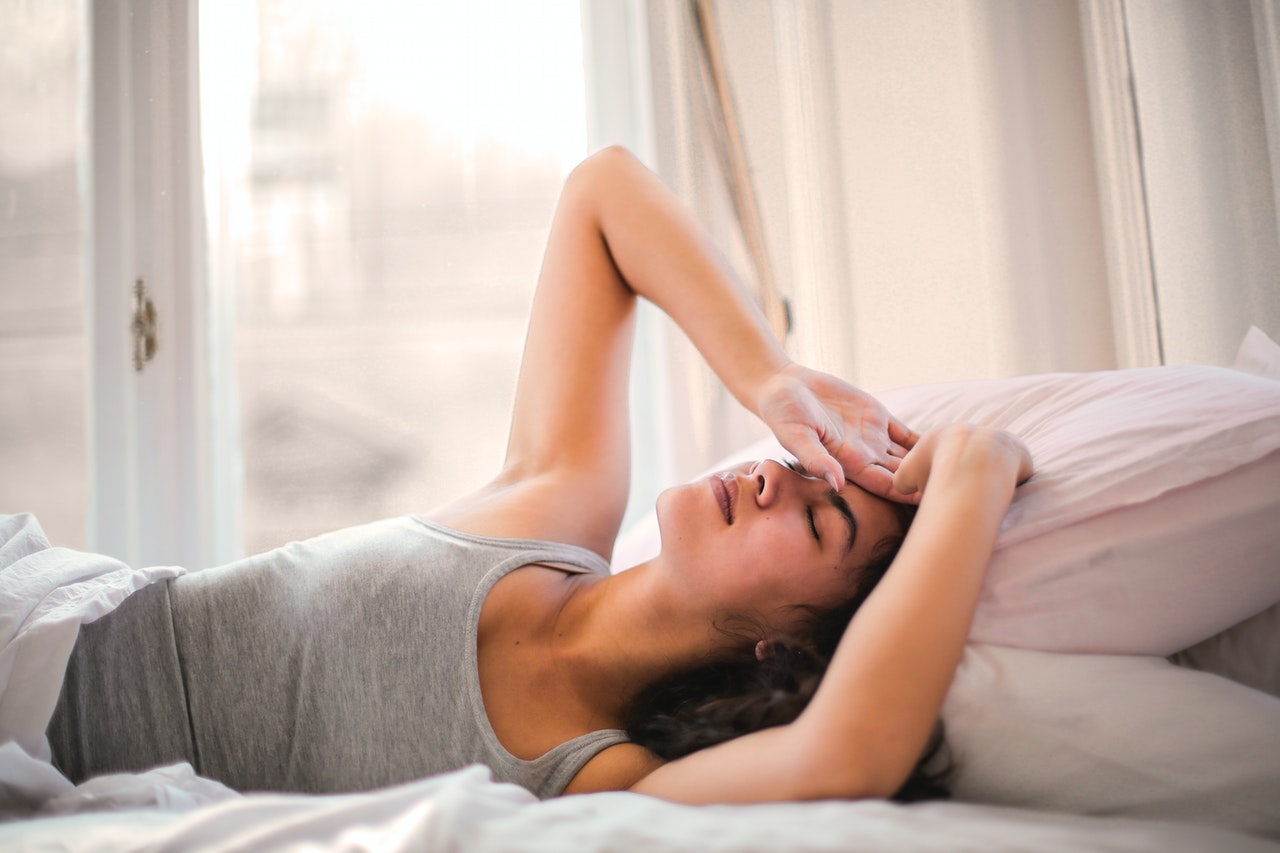By Melissa H. Laitner, PhD, MPH, SWHR Director of Science Policy
Women are more prone to certain sleep difficulties than men. They take longer to fall asleep, are more often sleep deprived, and are at higher risk for insomnia. Now, the COVID-19 pandemic is exacerbating these sleep problems.
One recent report suggests that anti-insomnia prescriptions, in addition to anti-anxiety and anti-depression medications, have increased significantly in the United States during the pandemic. Notably, the increase in anti-anxiety medication use was much higher in women. Recent overall rates of anti-insomnia medication use are highest in women aged 45-64, followed closely by women 65 years and up — an age group at high risk from the novel coronavirus.
SWHR spoke to Hrayr Attarian, MD, a professor of neurology at the Northwestern Feinburg School of Medicine, to discuss how sleep and sleep-related behaviors have been affected by COVID-19. “Certainly, there’s an increase in insomnia,” said Attarian, who also served as a member of SWHR’s Sleep Network. The patients he sees at Northwestern for sleep difficulties are “going to bed later, getting up later, and having worsening difficulties falling asleep and staying asleep.”
He confirmed that anxiety and stress related to COVID-19 plays a large role in sleep problems he has been seeing in his clinic. “There are several stressors — first, being at home, even with your loved ones, is stressful. We’ve also seen an increase in alcohol use, domestic abuse, and depression,” he said. “And then there are large groups of individuals having financial trouble” because of the pandemic.
“Any sort of discomfort or insomnia is going to be made worse by this stress,” Attarian added.
Many middle-age women in the sandwich generation provide the majority of care to both younger and older relatives, and these responsibilities have been magnified by the pandemic. This caregiving stress and anxiety, on top of day-to-day concerns, can severely impact sleep quantity and quality. As described by Ada Calhoun, author of Why We Can’t Sleep: Women’s New Midlife Crisis, “it’s the perfect storm of pressure.”
What can be done to combat sleep difficulties? “First, I recommend going outside, even if it’s just standing at your door step with a mask on. Get as much sunlight as possible,” Attarian said. When people are exposed to sunlight during the day, it is easier for them to fall asleep more quickly at night.
“If you can’t get sunlight — if you’re worried and don’t want to step foot outside the house — order a light box,” Attarian said. He recommends a sunlight-mimicking lamp of at least 10,000 lux. Often used as a treatment for seasonal affective disorder, these types of lightboxes imitate natural light and can be helpful in maintaining a regular sleep-wake cycle.
In addition to light, Attarian suggested taking time away from the never-ending flow of information on our phones, televisions, and computers. “Being constantly connected to the internet, to the news — it’s very, very detrimental to both mental health and sleep,” he said.
Attarian also emphasized the importance of keeping physically active, even while stuck in the house. Studies suggest that individuals who meet the recommended national guidelines of at least 150 minutes of physical activity weekly — or just 30 minutes, 5 times per week — show 65% improvement in sleep quality compared to those getting less than the recommended amount. They also report feeling less sleepy during the day.
The National Sleep Foundation provides guidelines for sleep health during the COVID-19 outbreak, which includes establishing and maintaining a daily routine, trying relaxation techniques, and keeping a healthy diet.
For those unable to find relief for their sleep troubles, consulting a doctor may be beneficial. Despite many health care centers canceling non-elective procedures, Attarian’s clinic has converted to full-time telehealth.
“We can do home sleep tests with devices that are portable. It’s mailed to the patient and then they are able to recycle it after use,” Attarian explained. Patients sync the data to their smartphones and are able to share it with clinics remotely.
The data is not as comprehensive as what physicians may obtain from a sleep study performed in the clinic, but it “does the job,” Attarian said. “People with sleep apnea, people with insomnia, people with restless leg syndrome — all of those people are getting proper, comparable diagnosis and treatment” via telehealth.
Prioritizing sleep and practicing good sleep hygiene matters now more than ever. For more information on the barriers women face in maintaining good sleep health and how sleep is affected by sex and gender, check out SWHR’s “Women & Sleep: A Guide for Better Health.”
